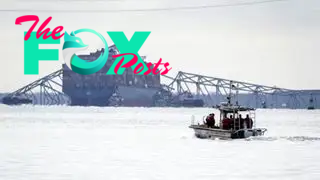Technology
Baltimore bridge collapse: an engineer explains what happened, and what needs to change
When the container ship MV Dali, 300 meters long and massing around 100,000 tons, lost power and slammed into one of the support piers of the Francis Scott Key Bridge in Baltimore, the bridge collapsed in moments. Six people are presumed dead, several others injured, and the city and region are expecting a months-long logistical nightmare in the absence of a crucial transport link.
It was a shocking event, not only for the public but for bridge engineers like me. We work very hard to ensure bridges are safe, and overall the probability of being injured or worse in a bridge collapse remains even lower than the chance of being struck by lightning.
However, the images from Baltimore are a reminder that safety can't be taken for granted. We need to remain vigilant.
So why did this bridge collapse? And, just as importantly, how might we make other bridges more safe against such collapse?
A 20th century bridge meets a 21st century ship

The Francis Scott Key Bridge was built through the mid 1970s and opened in 1977. The main structure over the navigation channel is a "continuous truss bridge" in three sections or spans.
The bridge rests on four supports, two of which sit each side of the navigable waterway. It is these two piers that are critical to protect against ship impacts.
And indeed, there were two layers of protection: a so-called "dolphin" structure made from concrete, and a fender. The dolphins are in the water about 100 meters upstream and downstream of the piers. They are intended to be sacrificed in the event of a wayward ship, absorbing its energy and being deformed in the process but keeping the ship from hitting the bridge itself.
-

 Technology8h ago
Technology8h agoThere Is a Solution to AI’s Existential Risk Problem
-

 Technology10h ago
Technology10h agoUS pushes to break up Google, calls for Chrome sell-off in major antitrust move | The Express Tribune
-

 Technology14h ago
Technology14h agoPublic health surveillance, from social media to sewage, spots disease outbreaks early to stop them fast
-

 Technology16h ago
Technology16h agoTikTok, PTA host youth safety summit in Pakistan | The Express Tribune
-

 Technology19h ago
Technology19h agoWhy a Technocracy Fails Young People
-

 Technology1d ago
Technology1d agoTransplanting insulin-making cells to treat Type 1 diabetes is challenging − but stem cells offer a potential improvement
-

 Technology1d ago
Technology1d agoJapan's $26 billion deep sea discovery sparks serious environmental concerns | The Express Tribune
-

 Technology1d ago
Technology1d agoShould I worry about mold growing in my home?



























